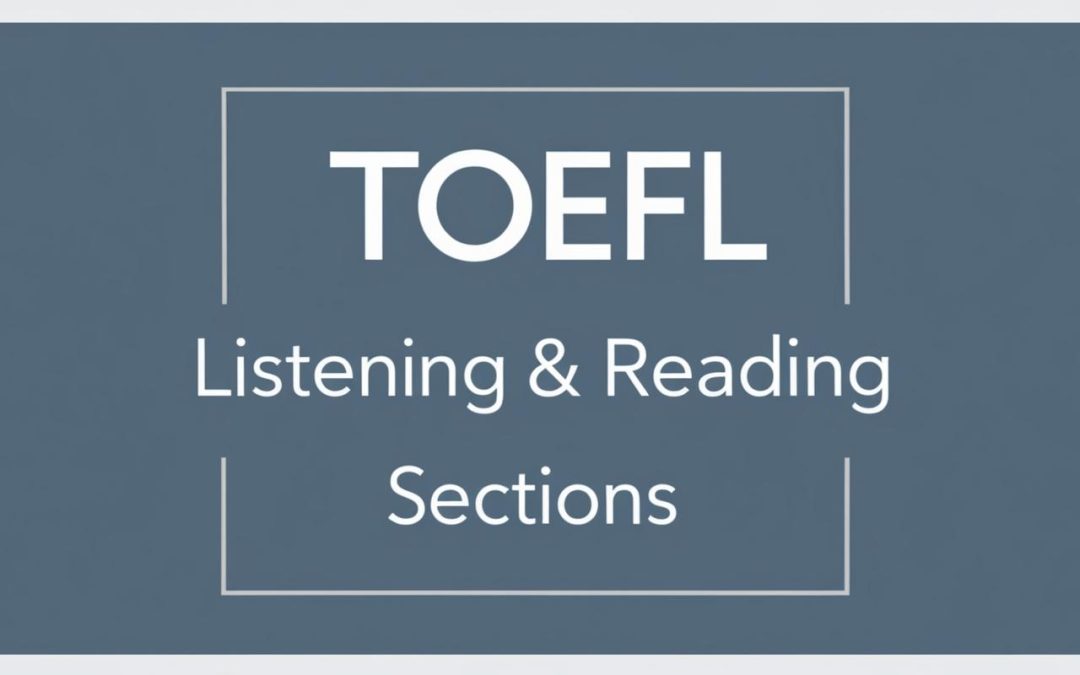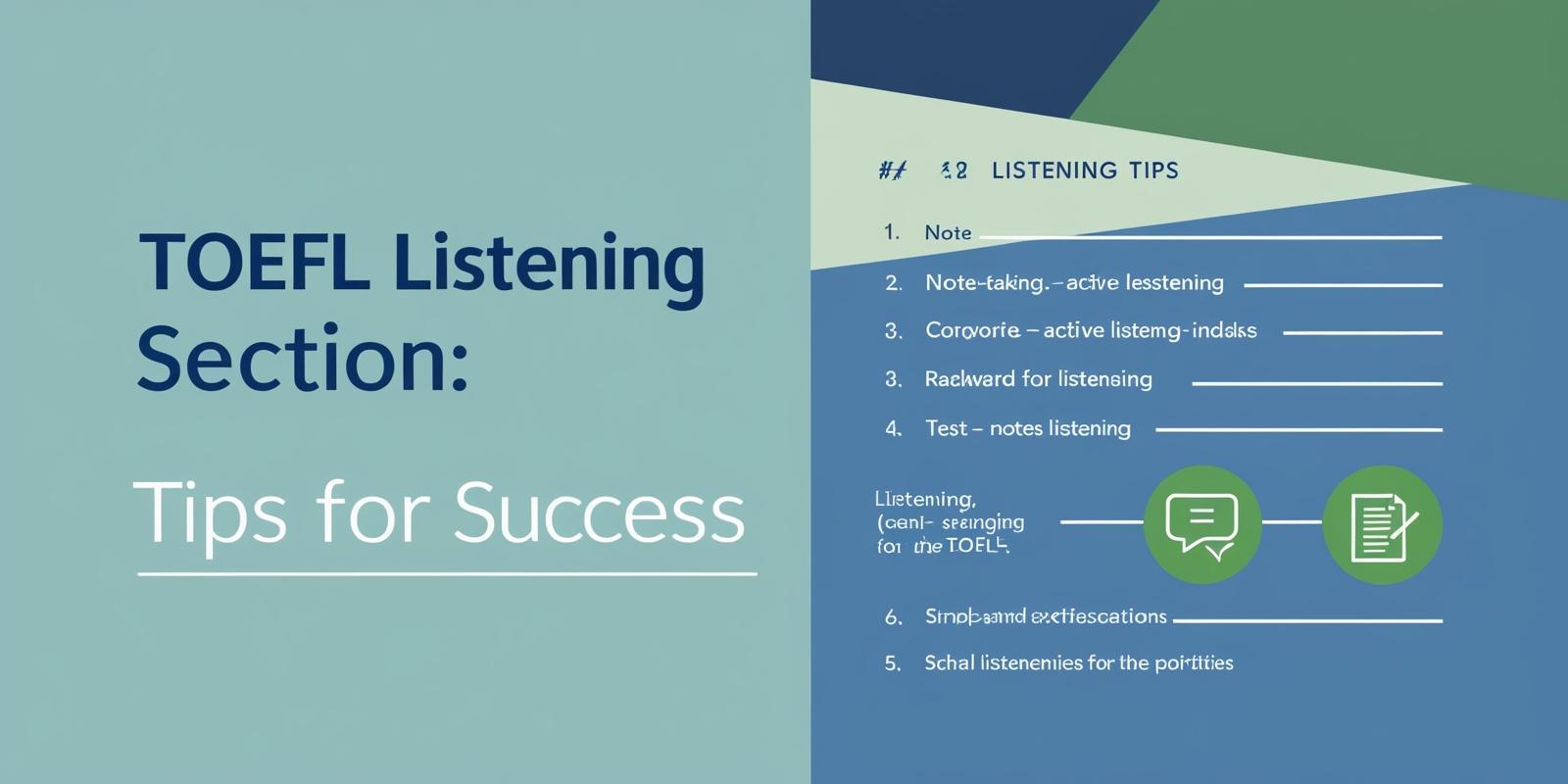Welcome to TakeMyTOEFLExam.com, your one-stop destination for mastering the TOEFL Listening and Reading sections. If you're preparing for the TOEFL exam, you know that these sections can be challenging, but with the right strategies and preparation, you can conquer them with confidence. In this article, we'll walk you through everything you need to know to ace the TOEFL Listening and Reading sections, with tips, insights, and frequently asked questions to guide you on your journey to success.
Why the TOEFL Listening & Reading Sections Matter
The TOEFL exam is designed to test your ability to understand and use English in an academic setting. The Listening and Reading sections are essential components of this test because they evaluate how well you can comprehend spoken and written English, skills that are vital for academic success in English-speaking environments.
The Listening Section assesses your ability to understand spoken English in academic contexts, including lectures, discussions, and conversations. You'll need to grasp main ideas, supporting details, and inferences.
The Reading Section evaluates your ability to understand written texts, including academic passages. You will need to identify the main idea, supporting details, and draw conclusions based on the information provided.
Both sections are designed to test not just your knowledge of English, but also your ability to think critically and analyze information. At TakeMyTOEFLExam.com, we want to help you develop the skills necessary to perform well in both of these key areas.
TOEFL Listening Section: Tips for Success
The TOEFL Listening section consists of 3-4 lectures and 2-3 conversations, each followed by a series of questions. The section lasts about 40 minutes, and you'll need to listen carefully to audio recordings and answer questions about them.
Tip #1: Practice Active Listening
Active listening is more than just hearing the words. It's about focusing on the content and structure of the message. When practicing for the TOEFL Listening section, make sure you're not just passively listening. Instead, try to:
Take notes on key points and examples.
Pay attention to transitions (e.g., "First," "In conclusion") and signal words that indicate important information.
Focus on tone, emphasis, and mood, as they can help you understand the speaker’s intent.
Tip #2: Familiarize Yourself with the Format
The TOEFL Listening section presents both academic lectures and everyday conversations. Some of the content may be familiar, but much of it will involve new vocabulary and contexts. Practice with TOEFL-style listening materials to get used to the pace, accent, and types of questions.
Tip #3: Use Context Clues
Context clues will help you understand unfamiliar vocabulary. If you don't know a word or phrase, try to infer its meaning based on the surrounding context. This is a critical skill that will help you answer questions even when the vocabulary isn't something you're familiar with.
Tip #4: Review Your Mistakes
After practicing, take time to review your mistakes. Did you miss a key detail because you didn't listen carefully? Did you misunderstand a question because of unfamiliar vocabulary? Identifying where you went wrong will help you refine your approach for the next practice session.
TOEFL Reading Section: Tips for Success
The TOEFL Reading section consists of 3-4 academic passages, each followed by a series of questions. You'll have 54-72 minutes to complete the section, depending on the number of passages. The goal is to evaluate your ability to comprehend academic texts.
Tip #1: Skim and Scan the Text
Before diving deep into the passage, skim the text to get a general understanding of the main idea. Look at headings, subheadings, and the first sentence of each paragraph to get a sense of the structure and content. After skimming, go back and scan for specific details as you answer the questions.
Tip #2: Focus on Main Ideas and Details
The questions in the TOEFL Reading section often ask about the main idea, specific details, and the meaning of certain words or phrases. Practice identifying these elements as you read. Ask yourself:
What is the author’s primary point or argument?
What examples or evidence does the author use to support their point?
What words or phrases indicate important information?
Tip #3: Practice Time Management
The TOEFL Reading section is time-pressured, so you’ll need to manage your time effectively. Don't get stuck on difficult questions move on and come back to them if you have time at the end. Try to pace yourself to ensure you finish all the questions within the allotted time.
Tip #4: Improve Your Vocabulary
Expanding your vocabulary is key to understanding complex academic texts. Make a habit of learning new words and their meanings, especially words that appear frequently in academic readings. Flashcards, vocabulary apps, and reading academic journals can help you build your vocabulary.
How TakeMyTOEFLExam.com Can Help You Succeed
At TakeMyTOEFLExam.com, we understand that preparing for the TOEFL can feel overwhelming. That’s why we’ve designed a range of resources to help you improve your Listening and Reading skills:
Practice Tests: Simulate real TOEFL test conditions with our practice tests to familiarize yourself with the question format and timing.
Tips & Strategies: Get expert tips on how to approach each question type and tackle tricky sections with ease.
Interactive Lessons: Our interactive lessons cover all aspects of the TOEFL Listening and Reading sections, helping you develop a deeper understanding of the test material.
Whether you're just starting your preparation or looking to fine-tune your skills, TakeMyTOEFLExam.com has everything you need to succeed.
FAQs: Your TOEFL Listening & Reading Questions Answered
1.How long is the TOEFL Listening section?
The TOEFL Listening section lasts about 40 minutes and includes 3-4 lectures and 2-3 conversations. Each item is followed by questions that test your comprehension.
2. How can I improve my TOEFL Listening skills?
To improve your listening skills, practice active listening, take notes, familiarize yourself with different accents, and review practice materials. Regular practice with TOEFL style content is essential.
3. What types of questions are in the TOEFL Reading section?
In the TOEFL Reading section, you’ll find questions that assess your ability to identify the main idea, locate specific information, understand vocabulary in context, and make inferences based on the passage.
4. How can I manage my time during the TOEFL Reading section?
To manage your time, try to read each passage quickly during your first pass, focusing on main ideas. Then, answer the questions efficiently and don’t dwell on difficult questions move on and come back to them if needed.
5. Are the Listening and Reading sections the same for every test?
While the content of the TOEFL Listening and Reading sections may vary slightly from test to test, the format and types of questions remain consistent. Practicing with real TOEFL materials will help you become familiar with the test structure.
6. What should I do if I don't understand a word in the Listening section?
Don’t panic! Use context clues to infer the meaning of the word. Focus on the overall message and listen for key details that can help you answer the question correctly.
7. Can I use a dictionary during the TOEFL test?
No, dictionaries are not allowed during the TOEFL test. However, practicing with a wide range of academic materials will help you familiarize yourself with the vocabulary you may encounter.
Conclusion: Start Your TOEFL Preparation Today.
Success in the TOEFL Listening and Reading sections is all about preparation and practice. At TakeMyTOEFLExam.com, we’re here to support you every step of the way. With our expert resources, tips, and strategies, you’ll be well on your way to mastering these critical sections and achieving your dream score.


